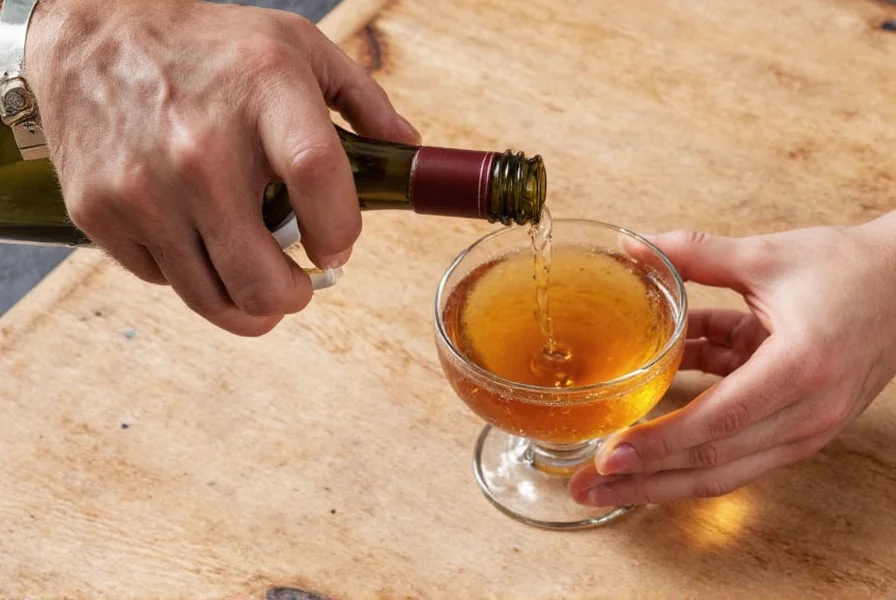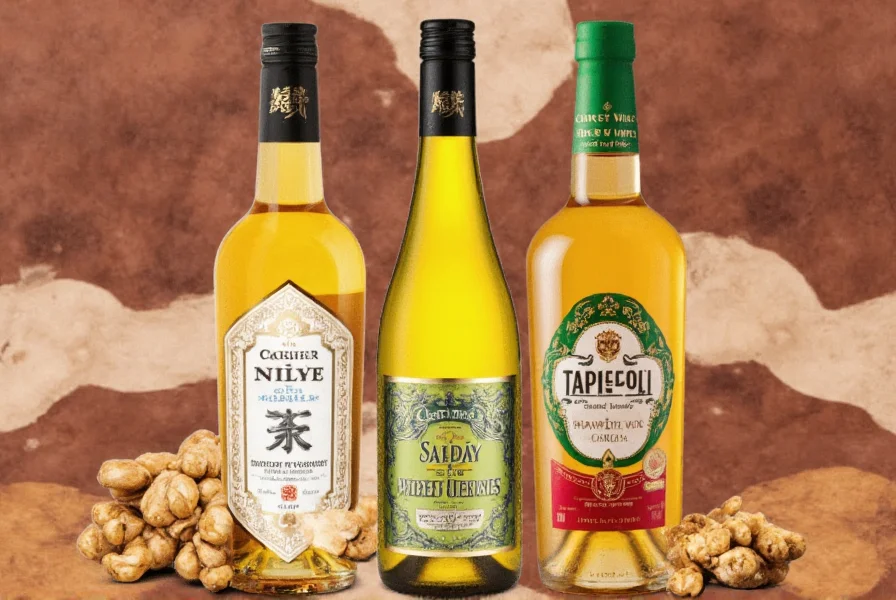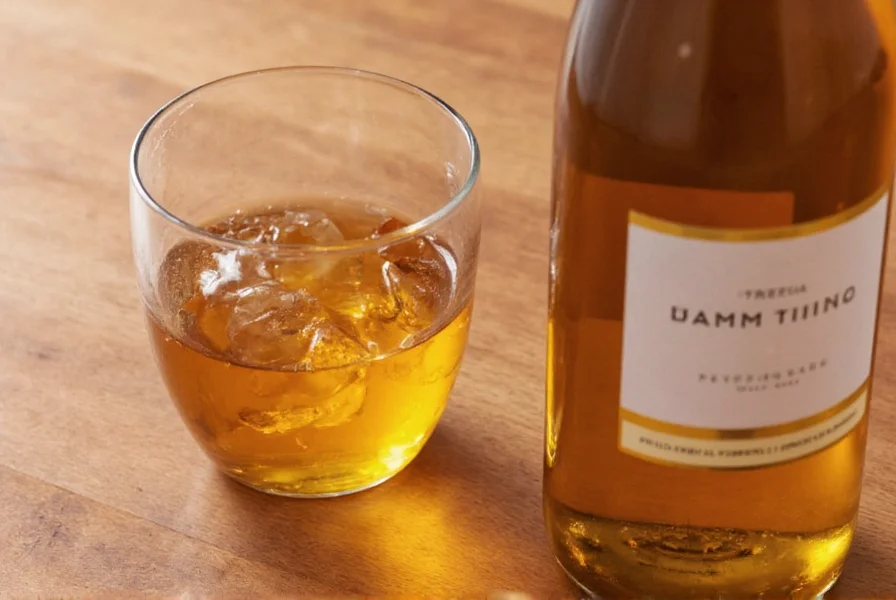Ginger wine has captivated palates for centuries with its distinctive spicy-sweet character. This traditional beverage originated in 18th century England but gained particular popularity in the United Kingdom and Caribbean regions. The fermentation process transforms fresh ginger root into a sophisticated drink that balances heat with honeyed notes, creating a versatile ingredient for both sipping and cooking.
The Historical Journey of Ginger Wine
Ginger wine's story begins with the global spice trade. When ginger root made its way from Asia to European markets, resourceful home brewers began experimenting with fermentation techniques. By the 1740s, documented recipes for ginger wine appeared in English household manuals, positioning it as both a medicinal tonic and social beverage. During the Victorian era, commercial production scaled significantly, with brands like Stone's establishing themselves as household names across Britain. The beverage traveled with British colonists to Caribbean islands, where local variations incorporating tropical fruits and spices emerged.
How Ginger Wine Is Crafted
The traditional ginger wine production process requires careful attention to ingredient ratios and fermentation timing. Artisanal producers start with freshly grated ginger root, which provides the essential volatile oils responsible for the characteristic heat. The ginger combines with sugar (typically cane sugar), water, and wine yeast in precise proportions. Unlike beer or wine production, ginger wine fermentation occurs at warmer temperatures (20-24°C/68-75°F) for 4-8 weeks, allowing complex flavor development without excessive carbonation.
During secondary fermentation, many producers add raisins or other dried fruits to enhance body and complexity. The aging process in glass or food-grade plastic containers (never metal, which reacts with ginger's compounds) allows harsh notes to mellow while preserving the vibrant ginger character. Commercial producers often use filtration and stabilization techniques to ensure consistent shelf life, while home brewers may prefer natural sedimentation for a more robust flavor profile.
| Beverage Type | Alcohol Content | Carbonation | Primary Production Method | Flavor Profile |
|---|---|---|---|---|
| Ginger Wine | 14-18% ABV | Still or lightly sparkling | Fermentation (4-8 weeks) | Rich, complex, sweet-spicy with wine-like depth |
| Ginger Beer | 0-6% ABV | Highly carbonated | Short fermentation (3-7 days) | Sharp, fiery, tangy with pronounced ginger bite |
| Ginger Ale | Non-alcoholic | Highly carbonated | Flavored syrup + carbonated water | Mild, sweet, subtle ginger flavor |
Culinary Applications Beyond the Glass
Ginger wine's versatility extends far beyond sipping. Professional chefs value it as a secret weapon for adding depth to both sweet and savory dishes. When using ginger wine in cooking, its alcohol content evaporates while leaving behind complex flavor compounds that enhance sauces, marinades, and reductions. In Asian cuisine, it often substitutes for rice wine in stir-fries, providing a subtle warmth without overpowering other ingredients.
For dessert applications, ginger wine elevates fruit compotes, poached pears, and gingerbread recipes. Its natural acidity balances sweetness while the ginger notes intensify other spices. When making ginger wine cocktail recipes, mixologists appreciate its ability to stand up to strong spirits while adding nuanced flavor—try it in a Ginger Wine Old Fashioned (2 oz bourbon, 0.5 oz ginger wine, 2 dashes Angostura bitters) for a sophisticated twist on the classic.
Health Considerations and Moderation
While health benefits of ginger wine derive primarily from its ginger content, the alcohol component requires mindful consumption. Ginger itself contains gingerols with anti-inflammatory properties, but these benefits diminish as alcohol content increases. A standard 5 oz serving of ginger wine contains approximately 150-200 calories, significantly more than non-alcoholic ginger beverages.
Nutritionally, ginger wine offers no significant vitamins or minerals beyond what's present in small amounts from the ginger root. Those seeking ginger wine for medicinal purposes should consider non-alcoholic alternatives like fresh ginger tea, as the alcohol content counteracts potential health benefits when consumed regularly. Pregnant women, individuals on certain medications, and those with digestive conditions should consult healthcare providers before regular consumption.
Storage and Serving Recommendations
Proper storage maintains ginger wine's quality for up to two years unopened. Keep bottles in a cool, dark place away from temperature fluctuations. Once opened, refrigerate and consume within 4-6 weeks, as exposure to air accelerates flavor degradation. Unlike wine, ginger wine doesn't benefit from extensive aging—its vibrant ginger character peaks within 1-2 years of production.
For optimal enjoyment, serve ginger wine chilled (8-10°C/46-50°F) in tulip-shaped glasses that concentrate aromas. The traditional British serving includes a twist of lemon peel to brighten the spicy notes. When using in ginger wine cocktail recipes, shake rather than stir to properly integrate the viscous liquid with other ingredients.

Exploring Variations and Modern Interpretations
Contemporary producers are expanding ginger wine's boundaries with innovative variations. Some craft versions incorporate additional botanicals like lemongrass, citrus zest, or warming spices (cinnamon, cloves) during fermentation. Low-alcohol interpretations (6-8% ABV) cater to consumers seeking ginger flavor with reduced alcohol content, while organic and vegan-certified options address growing market demands.
Home fermentation enthusiasts can create personalized batches by adjusting ginger-to-sugar ratios—more ginger yields spicier results, while additional sugar creates sweeter profiles. The traditional ginger wine recipe typically uses a 1:1 ratio of grated ginger to sugar by weight, but experimentation within safe fermentation parameters allows for customization based on personal preference.

Understanding Quality Indicators
When selecting ginger wine, look for products with clear labeling of ingredients and alcohol content. High-quality versions list only ginger, sugar, water, and yeast—avoid those with artificial flavors, colors, or excessive preservatives. The color should be a rich amber (not orange or brown), indicating proper fermentation rather than caramel coloring.
Shake the bottle gently before purchasing; you should see fine sediment (especially in unpasteurized versions), which indicates minimal processing and preservation of natural compounds. Commercial brands like Stone's, Crabbie's, and homemade versions following traditional ginger wine recipe methods typically offer the most authentic experience for both drinking and culinary applications.
Frequently Asked Questions
What's the difference between ginger wine and ginger beer?
Ginger wine undergoes full fermentation (4-8 weeks) resulting in 14-18% alcohol content and a rich, complex flavor, while ginger beer has shorter fermentation (3-7 days) with 0-6% alcohol and higher carbonation. Ginger wine is typically still or lightly sparkling with wine-like depth, whereas ginger beer is highly carbonated with a sharper, more intense ginger flavor.
Can I use ginger wine in cooking if I don't drink alcohol?
When cooked thoroughly, most alcohol evaporates from ginger wine while retaining its flavor compounds. However, trace amounts may remain. For completely alcohol-free alternatives, use strong ginger tea reduced by half or commercial non-alcoholic ginger extracts specifically designed for cooking.
How long does opened ginger wine last?
Refrigerated opened ginger wine maintains best quality for 4-6 weeks. Store in its original bottle with a tight-sealing stopper to minimize oxidation. You'll notice flavor degradation through diminished ginger intensity and development of vinegary notes as it ages past its prime.
Is ginger wine gluten-free?
Traditional ginger wine made from ginger root, sugar, water and wine yeast is naturally gluten-free. However, some commercial brands may use processing aids or additives containing gluten. Always check labels for gluten-free certification if you have celiac disease or gluten sensitivity, especially with craft or imported varieties.











 浙公网安备
33010002000092号
浙公网安备
33010002000092号 浙B2-20120091-4
浙B2-20120091-4